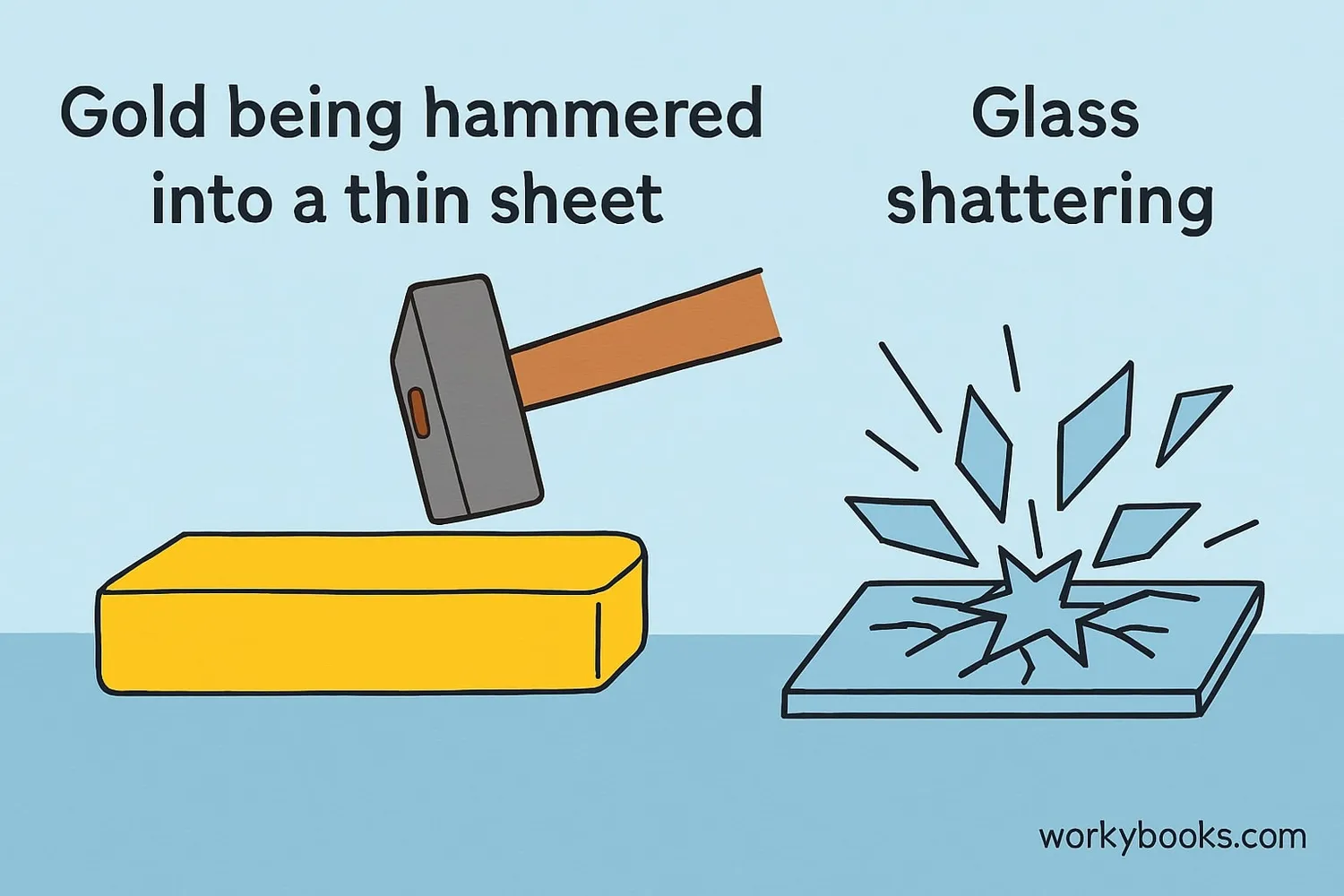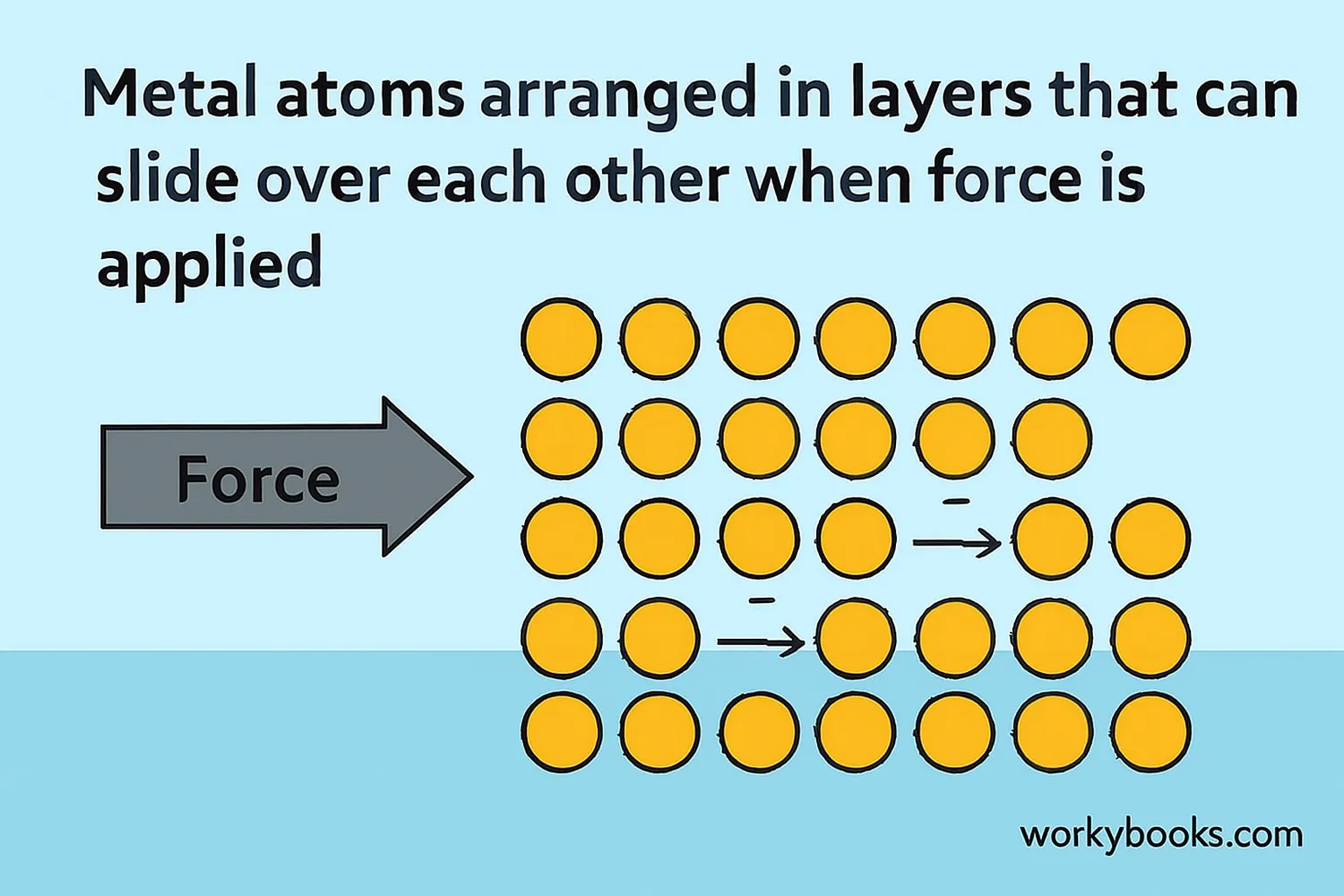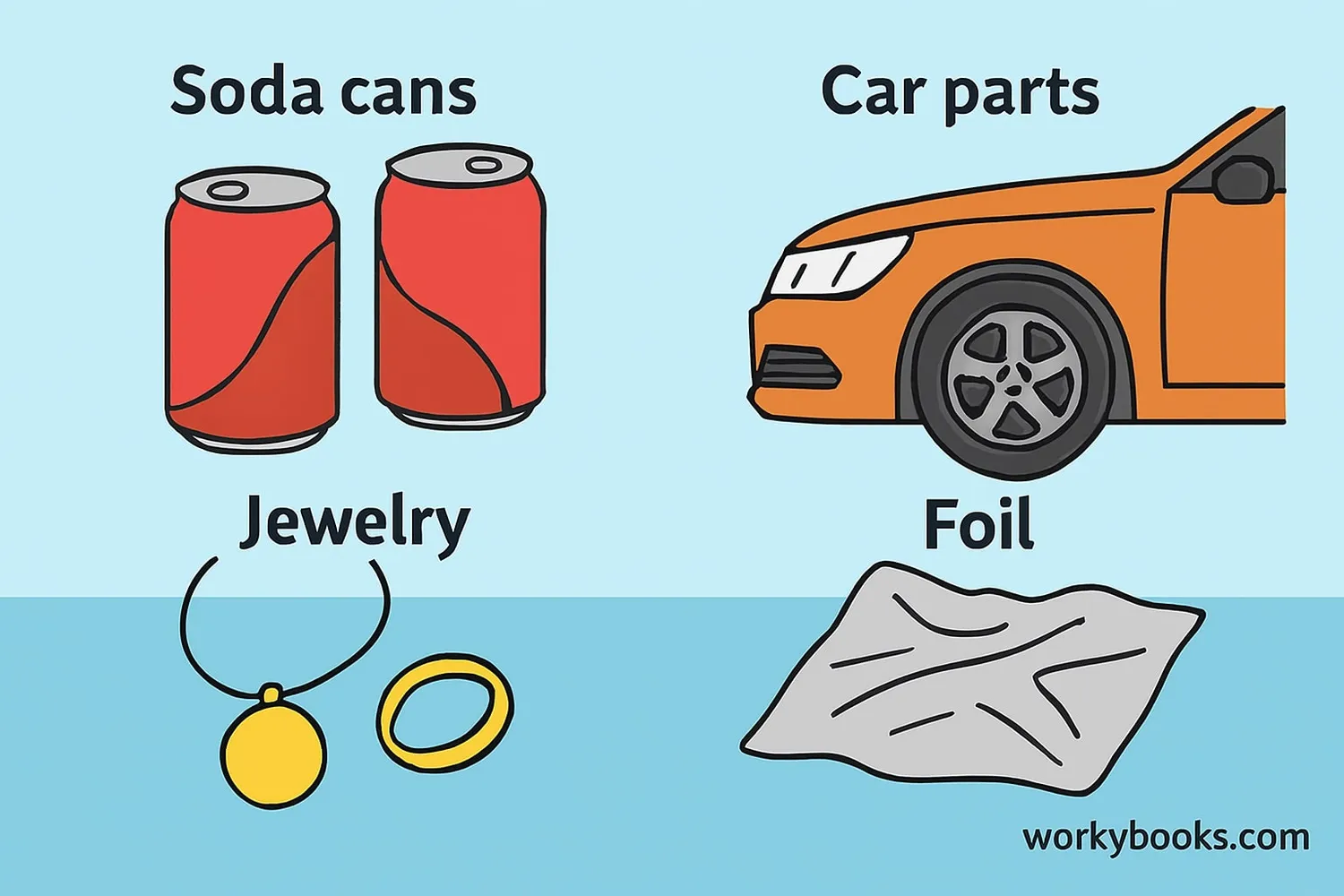Malleability - Definition, Examples, Quiz, FAQ, Trivia
Learn how materials can change shape without breaking
What is Malleability?

Malleability is a material's ability to be hammered, pressed, or rolled into thin sheets without breaking or cracking. It's one of the special properties that makes metals so useful for creating objects.
Imagine playing with clay - you can press it flat into a pancake shape without it breaking apart. That's similar to how malleable metals behave! Materials with high malleability can be shaped into many different forms without losing their strength.
Malleability vs Ductility
Malleability is about shaping into sheets, while ductility is about stretching into wires. Gold is both highly malleable and ductile!
Examples of Malleable Materials
Gold
Most malleable metal - can be hammered into sheets thinner than paper
Aluminum
Used for foil, cans, and packaging materials
Iron & Steel
Shaped into car bodies, beams, and construction materials
How Malleability Works

Malleability works because of how atoms are arranged in metals. Unlike materials like glass or ceramics that have rigid structures, metals have atoms arranged in orderly layers that can slide past each other when force is applied.
This special arrangement is called a metallic bond. The atoms share electrons that act like glue, holding the metal together while allowing the layers to move. When we hammer or press metal, these layers slide over each other, changing the metal's shape without breaking it.
Atomic Structure
Atoms arranged in orderly layers
Metallic Bonds
Shared electrons allow movement
Applied Force
Hammering or pressing applies pressure
Sliding Layers
Atomic layers slide past each other
New Shape
Material changes form without breaking
Material Comparison
| Material | Malleability | Common Uses |
|---|---|---|
| Gold | Very High | Jewelry, electronics |
| Aluminum | High | Foil, cans, aircraft |
| Copper | High | Wires, pipes |
| Glass | None | Windows, containers |
| Ceramic | None | Dishes, tiles |
Why Malleability Matters

Malleability is one of the most important properties in material science and manufacturing. Without malleable materials, many of the objects we use every day wouldn't exist!
Manufacturing
Cars, airplanes, and appliances are shaped from metal sheets
Construction
Metal roofing, structural beams, and pipes
Packaging
Aluminum foil and cans preserve food
Material Science
Engineers test materials to understand their malleability before using them in products. The ability to shape metal without weakening it is crucial for safety in buildings and vehicles.
Malleability allows us to:
• Create thin sheets for packaging
• Shape metal into complex forms
• Manufacture products efficiently
• Recycle materials by reshaping them
Without malleable materials, our world would look very different - no cars, no skyscrapers, and no aluminum foil for wrapping sandwiches!
Malleability Quiz
Test your knowledge about malleability with this quiz. Choose the best answer for each question.
Frequently Asked Questions
Here are answers to common questions about malleability:
Material Science Trivia
Discover fascinating facts about malleability and materials:
Gold Leaf
A single ounce of gold can be hammered into a sheet covering 100 square feet! Gold leaf can be as thin as 0.000127 millimeters.
Ancient Metalworking
Humans have been hammering metals into shapes for over 8,000 years! The oldest known gold jewelry dates back to 4600 BC in Bulgaria.
Mercury Mystery
Mercury is the only metal that's liquid at room temperature. While we don't hammer it, mercury shows high malleability by easily changing shape!
Aircraft Aluminum
Modern airplanes use special aluminum alloys that balance malleability for shaping with strength to withstand flight pressures.


